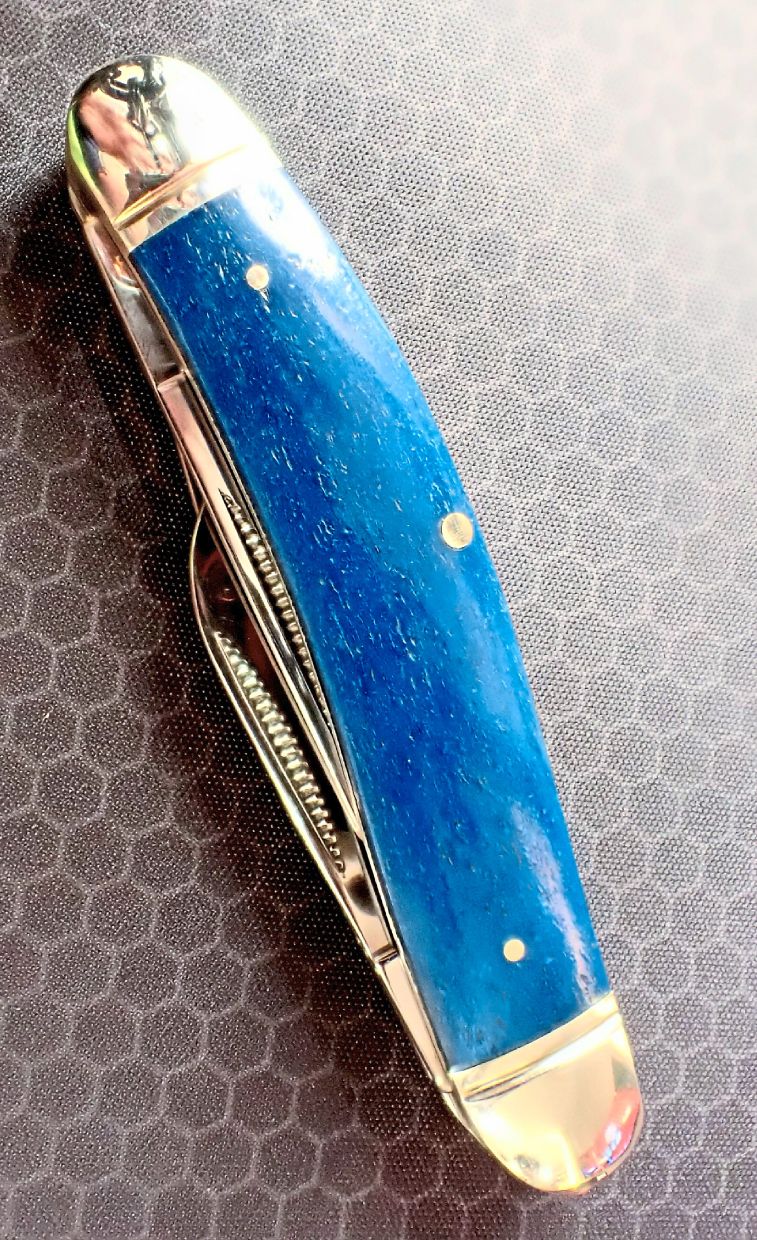An assortment of steel, aluminium and G10 knife handles. Beyond their functionality, knife handles are a fashion statement too. — Photos: THOMAS AW/The Star
The handle or hilt of a knife is a pivotal component of any cutting tool, and how it is made plus what it is made with can even determine the knife’s reliability.
Knife hilts also have a high form factor, because artfully made hilts scream good aesthetics and instil pride of ownership, especially for those who make a hobby out of collecting knives, just like people who collect watches or handbags.
Various materials have been used over the centuries, each with unique properties and characteristics.
Here are some popular knife handle materials, highlighting their attributes, benefits, and drawbacks.
Wooden knife handles have a timeless appeal that exudes warmth and craftsmanship.
Wood like oak, walnut, cherry and rosewood sport beautiful grain and hues while providing an excellent grip and allowing knife makers to carve them to maximise ergonomics.
However, wood handles require regular maintenance, such as oiling or waxing, to prevent drying, cracking, or warping. They are susceptible to moisture, which can lead to decay or fungal growth.
Despite these challenges, many knife enthusiasts still prefer the perennial elegance of wooden hilts.
Used for centuries, the leg bones of cattle, deer, camel and other large mammals have been used since medieval times as knife hilts.
Some knife users opine that when wet, bone hilts continue to provide excellent grip, leading to many large camping knives to be hafted with bone handles.
It is generally regarded as more durable than wood, though because it is a natural material, a good measure of thickness is needed to make the hilt robust, which means bone hilts tend to be beefy and therefore not a suitable material for those needing a slim-profile knife.
Purely for aesthetics, some knife makers use bone inlays screwed onto steel handles. These are treated to give long-lasting beautiful colours.
This is a composite material made from layers of fabric, paper, or fibreglass soaked in resin and compressed under high pressure.
Its making allows for much creativity, and there are Micarta knife grips in which the fabric employed is denim cloth, creating textures and colours that make the knife into a thing of beauty.
There is almost no limit to the type of material that can be used to soak the resin and create it.
The result is a durable, non-porous material with excellent grip and resistance to moisture and chemicals. Micarta handles are known for their reliability and can withstand harsh conditions.
One of the main benefits of Micarta handles is their low maintenance requirements, making them ideal for outdoor and tactical knives.
However, some may find that Micarta handles stain easily from the oils that they become exposed to from normal use.
This is another popular synthetic material used for knife handles. It is made from layers of fibreglass cloth soaked in epoxy resin, creating a strong and lightweight handle.
G10 handles are highly resistant to moisture, chemicals, and UV rays, making them suitable for heavy-duty applications.
One of the advantages of G10 handles is their versatility. They can be textured for enhanced grip and are available in numerous colours.
They are also easy to clean and maintain, making them a favourite among users who demand durability and functionality over aesthetics.
Stainless steel handles offer a modern and sleek appearance, often seen in high-end chef’s and folding pocket knives. They are highly durable, resistant to corrosion and require minimal maintenance. They can be textured or embellished for improved grip and aesthetics.
Despite their many advantages, stainless steel handles can be heavy and less comfortable for extended use.
They can also become slippery when wet, which is a consideration for those using knives in wet environments or with oily hands.
Carbon fibre handles have gained popularity recently due to their lightweight and high-strength properties.
These handles are known for their contemporary and minimalist aesthetics. Carbon fibre is exceptionally durable and resistant to corrosion.
While carbon fibre handles offer excellent strength-to-weight ratios, they can be relatively expensive.
Some users find it less appealing, so knife makers add more warmth and character by combining natural materials like wood with carbon fibre inserts.
Titanium handles have become increasingly popular among knife enthusiasts due to their exceptional strength-to-weight ratio, corrosion resistance, and modern aesthetics. This alloy is known to be lightweight yet durable, making them suitable for outdoor and everyday-carry knives.
As material for the hilt, titanium significantly reduces the weight and profile of knives while maintaining strength and durability.
Titanium handles can be anodised to achieve various colours, allowing for customisation and personalisation.
Its superior corrosion resistance makes it ideal for extended exposure to saltwater environments.
These materials are only the popular ones. Knife makers use other materials from nylon, phenolic, bakelite, high-grade plastic, aluminium and much more.
Each material has unique advantages and drawbacks, catering to a diverse range of uses. Whether you prioritise aesthetics, durability, ease of maintenance, or lightweight performance, the suitable handle material can significantly impact your overall experience.









